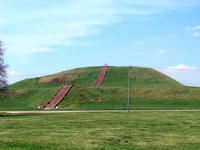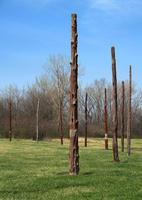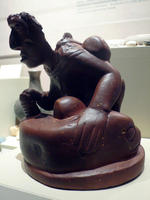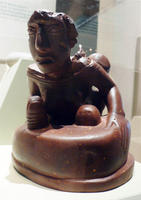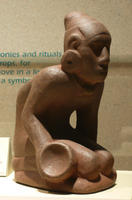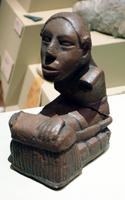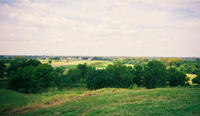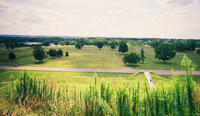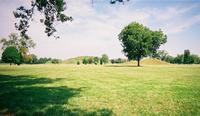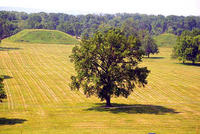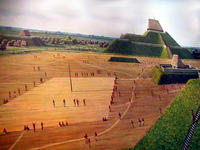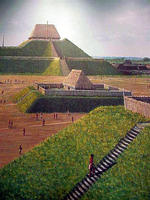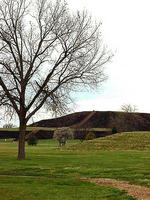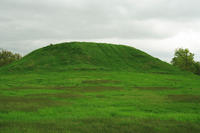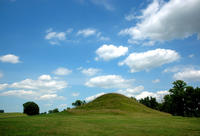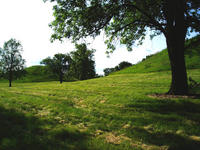You are in: North America -> United States of America -> Cahokia Mounds State... , and traditional search or Image Gallery will yield results of this site only
Cahokia Mounds State Historic Site
| Site number: | 198 |
|
| Type of site: | Cultural | |
| Date: | 800–1400 | |
| Date of Inscription: | 1982 | |
| Location: | North America, United States of America, Illinois, St. Louis | |
Up to 75 images are shown here. Click on each for more details or on Image Gallery for more images.
| Description: | Some 13 km north-east of St Louis, in Missouri, lie the Cahokia Mounds, it is the largest pre-Columbian settlement north of Mexico. The site was primarily occupied during the Mississippian period from 800 to 1400, at which time it enveloped almost 1,600 ha and incorporated some 120 mounds. It is a remarkable instance of an intricate chiefdom society, with countless satellite mound foundations and several remote hamlets and villages. At its zenith between 1050 and 1150, this agricultural society might have had a population of as many as 10–20,000 residents. The site possesses a prime feature - the 30 m high Monks Mound, which is Americas’ largest prehistoric earthwork, covering some 5 ha. --WHMNet paraphrase from the description at WHC Site, where additional information is available. | |
| Cahokia is the site of an ancient Native American city near Collinsville, Illinois, across the Mississippi River from St. Louis, Missouri in the American Bottom floodplain. The site is composed of a series of man-made earthen mounds. Cahokia is the largest archaeological site related to the Mississippian culture, and the term "Cahokian" is sometimes used to describe that culture. The Mississippians developed advanced societies in eastern North America before the arrival of Europeans. Cahokia Mounds was designated a National Historic Landmark on July 19, 1964, and listed on the National Register of Historic Places on October 15, 1966. Cahokia Mounds State Historic Site was designated a World Heritage Site in 1982. The park protects 2200 acres (8.9 km²), and is the focus of ongoing archaeological research. This is one of only twenty World Heritage Sites in the United States designated by the United Nations Educational, Scientific and Cultural Organization (UNESCO). Cahokia was the most important center for the peoples known today as Mississippians whose settlements ranged across what is now the Midwest, Eastern, and Southeastern United States. Cahokia maintained trade links with communities as far away as the Great Lakes to the north and the Gulf Coast to the south. Pottery and stone tools in the Cahokian style were found at the Silvernail site near Red Wing, Minnesota. At the high point of its development, Cahokia was the largest urban center north of the great Mesoamerican cities in Mexico. Although it was home to only about 1,000 people before ca. 1050, its population grew explosively after that date. Archaeologists estimate the city's population at between 8,000 and 40,000 at its peak, with more people living in outlying farming villages that supplied the main urban center. If the highest population estimates are correct, that would mean that Cahokia was larger than any city in the United States until about 1800 when Philadelphia's population grew beyond 40,000. --Wikipedia. Text is available under the Creative Commons Attribution-ShareAlike License. | ||
| Source: | http://whc.unesco.org/en/list/198 | |
| Reference: | 1. UNESCO World Heritage Center, Site Page. | |


